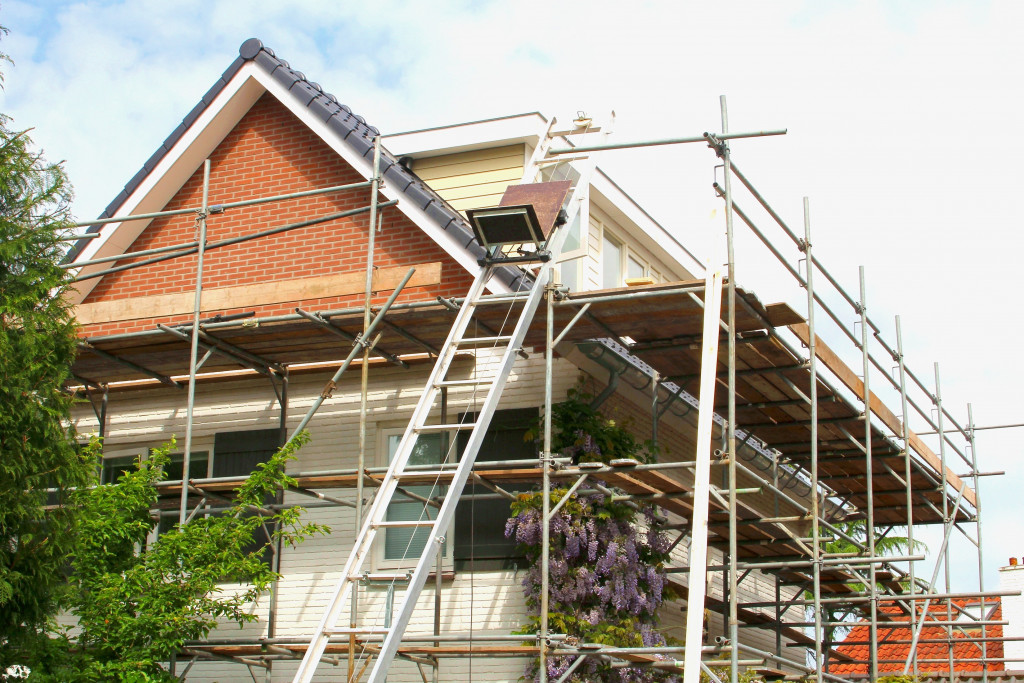- Adding a second floor to your home can provide additional living space and increase its value.
- Building a second story can be more cost-effective than moving to a larger house.
- A second-floor addition can enhance the property’s exterior, providing an attractive feature.
- Large windows or balconies on the second floor may provide optimal outdoor views.
- Creating an addition involves designing, obtaining permits/inspections, and hiring a contractor for construction.
Have you ever considered the benefits of building a second floor as a homeowner? Whether you need extra living space or want to add more value to your property, a second-floor addition can provide several benefits. Here’s what you need to know about homes in the U.S., how it’s beneficial for your property, and how you can get started with your renovations.
Homes in The U.S.
Second-story homes are becoming the norm today. However, many homes are still single-story. According to Zillow, the median property value of one-story homes in the U.S. is about 10% less than two-story homes with lower down payment requirements and a higher potential for resale value (all other factors being equal).
Benefits of Adding a Second Floor
There are various benefits to having a second floor. Here are some of those benefits:

Additional Living Space
One of the most obvious reasons to build a second floor in your home is to gain additional living space. Adding a second story can provide more room for bedrooms, bathrooms, and living areas, allowing your family to spread out and enjoy your home to the fullest. This can be especially beneficial for growing families or frequently entertaining guests.
Increased Home Value
Another great reason to build a second floor is to increase the overall value of your home. Adding more living space and modern amenities can significantly boost your property’s resale value, making it a smart investment in the long term. If you plan on selling your home, a second-floor addition can provide a strong return on investment. The current value of homes today is around $400,000, but adding a second floor to your home can be valued at a much higher rate.
Cost-Effective Solution
Believe it or not, building a second floor can be more cost-effective than selling your home and purchasing a larger one. Instead of going through the hassle and expense of moving, you can invest in a second-floor addition that provides the space and features you need without relocating.
Enhanced Curb Appeal
When building a second-floor addition, you can also update the exterior of your home. You can choose from various architectural styles, materials, and design elements that can enhance the overall curb appeal of your property. This can be especially helpful if your home’s exterior is outdated or needs a facelift.
Optimal Outdoor Views
Finally, a second-floor addition can provide optimal outdoor views of your property and the surrounding landscape. This can be especially beneficial if you live in a scenic area and want to take advantage of the view. You can install large windows or outdoor balconies that provide a panoramic view of your property and the surrounding area.
How to Renovate Your Home
Now you know the benefits of building a second floor, it’s time to start your renovation project. Here are four steps to help you get started:

Stairs
The first thing you should consider is where to put your stairs. You’ll want to ensure that the stairs are easily accessible and placed in an area that doesn’t create a safety hazard or obstructions. Additionally, consider installing robust stair nose molding for your stairs. This molding can make it more resilient and add an attractive feature to your staircases.
Design
The next step is to design your second-floor addition. This includes deciding the layout, materials, and features you’d like for your floor plan. It’s also important to consider how much space you need so you can determine the size of your addition.
Permits & Inspections
Once you have a design, it’s time to apply for permits and inspections. Depending on where you live, this may involve obtaining city or county permits before beginning construction. Ensuring all necessary paperwork is correctly filled out and approved before starting any renovations is essential.
Construction
Finally, it’s time to start construction. If you’re not a pro, you may want to hire a contractor to help you with the building process. Make sure to research and compare contractors before selecting one, so you can find a reliable professional who offers excellent craftsmanship and customer service.
Building a second floor for your home can provide numerous benefits, such as creating additional living space, improving the value of your property, being cost-effective compared to moving, enhancing curb appeal, and providing optimal outdoor views. The renovation involves designing an addition that meets your needs; applying for permits and inspections; finding the right contractor; and following through on construction. With the right preparation and knowledge, adding a second floor to your home can be a rewarding experience.

